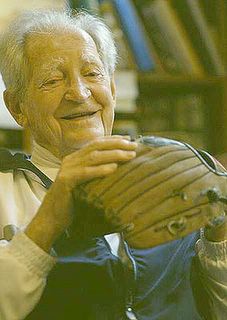In 1897,
Mark Twain wrote (in a widely-corrupted quotation), "This report of my death was an exaggeration." That's what I thought when I read this
provocative post by Peter Merholz:
I am left with the thought that the phrase "user experience," as a meaningful term describing practice and concern, is dead.
Dead dead dead...
"User experience" feels like a term, and concept, whose meaningful time is over. I don't know what (if anything) will take its place. But there's clearly a lack of interest and effort in meaningful evolution. The energy seems to be behind the terms and concepts of "information architecture," "interaction design," and "usability engineering." Maybe we should take that as a sign.
Yeah, it's a sign, all right—a sign of nearsightedness and narcissism.
I don't disagree with Peter. It
does seem like the term, "user experience," has languished. It lacks a champion to trumpet its value. As of yet, there's no
Don't Make Me Think! or
Polar Bear Book that ignites an audience, no Jakob-Nielsen-like proponent who passionately presses its cause. As Peter points out, the organizations that
should be doing so "have only done an extreme disservice by rendering the term irrelevant."
But that doesn't mean that the term is dead. Information architecture, interaction design and usability engineering indeed have more energy behind them, powered by the voluble cognoscenti of these various disciplines. But they're missing the forest for the trees, the tools for the final product. It's OK, even commendable, to be enthusiastic about your discipline—but if that passion blinds you to the bigger picture, you're doing yourself a disservice.
And the bigger picture, the end product, the forest, is and must be superb user experiences.
No less an authority than
Donald Norman recognized this when he coined the term. Peter quotes him in a
long-ago post:
I invented the term because I thought Human Interface and usability were too narrow: I wanted to cover all aspects of the person's experience with a system, including industrial design, graphics, the interface, the physical interaction, and the manual.
In response, Peter surmised that UX is "so broad in the disciplines and people it requires, that it was inevitable for folks to reduce its meaning in order to get their arms around it." That scope is reflected in my own definition of UX: "User experience is the
totality of an individual's interaction with and response to a business, product or service in any and every medium."
Sure, the scope is vast—but that's no reason to retire the term.
And, damn it, the very breadth of the discipline what is so cool about UX. It forces us to our knees. It makes us admit that creating outstanding user experiences is more than one person can handle. It pushes us out of our cloistered single disciplines—IA, IxD, HCI, human factors, usability, visual design, programming
, et al—into the collaborative communities of creativity required for our mutual success and survival.
"UX" dead? It's just slumbering, awaiting those willing to grapple with its size and preach its gospel.





